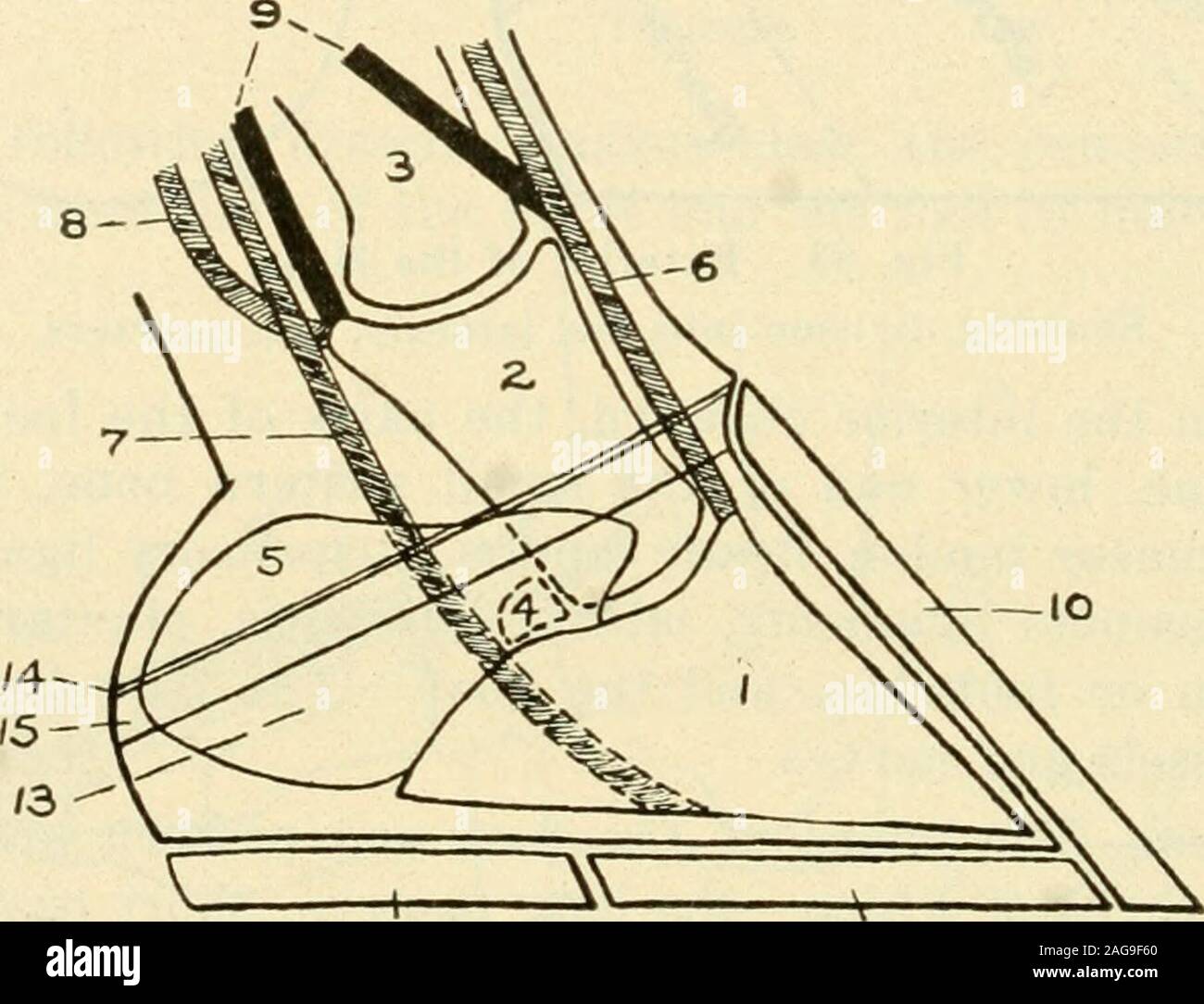. Types and market classes of live stock. dge of the hair. The outer branch ofthe suspensory ligament attaches to the tendon a short dis-tance above this point. The flexor tendon of the foot passesdown between the heels, glides over the under surface of thenavicular bone, and attaches to the under surface of the coffinbone. The bones of the foot are held together by powerfulshort ligaments. Lateral cartilages and plantar cushion.—The elastic tis-sues of the foot include the lateral cartilages and the plantar 310 Types and Market Classes of Live Stock cushion. The lateral cartilages are two pla

Image details
Contributor:
The Reading Room / Alamy Stock PhotoImage ID:
2AG9F60File size:
7.1 MB (242 KB Compressed download)Releases:
Model - no | Property - noDo I need a release?Dimensions:
1807 x 1383 px | 30.6 x 23.4 cm | 12 x 9.2 inches | 150dpiMore information:
This image is a public domain image, which means either that copyright has expired in the image or the copyright holder has waived their copyright. Alamy charges you a fee for access to the high resolution copy of the image.
This image could have imperfections as it’s either historical or reportage.
. Types and market classes of live stock. dge of the hair. The outer branch ofthe suspensory ligament attaches to the tendon a short dis-tance above this point. The flexor tendon of the foot passesdown between the heels, glides over the under surface of thenavicular bone, and attaches to the under surface of the coffinbone. The bones of the foot are held together by powerfulshort ligaments. Lateral cartilages and plantar cushion.—The elastic tis-sues of the foot include the lateral cartilages and the plantar 310 Types and Market Classes of Live Stock cushion. The lateral cartilages are two plates of gristle, oneon either side of the foot, extending from the wings of thecofRn bone backward to the heels and upward to a distance ofan inch or more above the edge of the hair, where they mayusually be felt by the fingers. When sound, these plates areelastic and yield readily to moderate finger pressure, but fromvarious causes they may undergo ossification, in which condi-tion they are hard and unyielding and are called sidebones.. Fig. 84. Diagram Showing Structure of Foot. 1, Coffin bone; 2, small pastern bone; 3, large pastern bone; 4, navic-ular bone; 5, lateral cartilage; 6, extensor tendon; 7, flexor tendon offoot; 8, flexor tendon of pastern; 9, branches of suspensory ligament; 10, wall; 11, sole; 12, frog; 13, indicates location of plantar cushion betweenthe lateral cartilages; 14, perioplic ring; 15, coronary cushion. The plantar cushion is a wedge-shaped mass of tough, elastic, fibro-fatty tissue filling all the space between the lateral car-tilages, forming the fleshy heels, and serving as a buffer to dis-perse shocks. It extends forward underneath the navicularbone and flexor tendon, and protects these structures from in-jurious pressure from below. Pododerm (or foot-skin).—The pododerm or horn-produ-cing membrane is merely a continuation of the derm, or trueskin. It covers the foot inside the hoof, just as a sock coversthe human foot inside the shoe. It diff